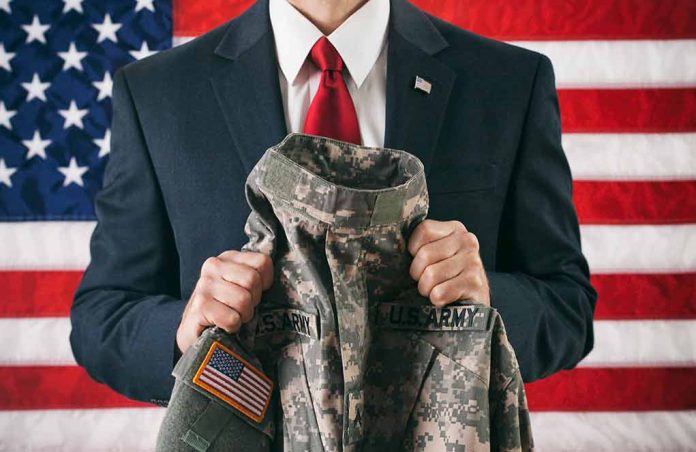
Trump’s latest executive orders on transgender service in the military and DEI initiatives have sparked a significant shift in military policy.
Key Takeaways
- President Trump rescinded a Biden-era rule allowing transgender individuals to serve openly.
- Current transgender troops remain unaffected by the immediate repeal.
- There are an estimated 9,000 to 14,000 transgender service members.
- The administration aims to establish a merit-based military excluding DEI programs.
Rescinding Biden’s Inclusive Policies
President Trump has repealed a directive by former President Biden, which had allowed transgender individuals to serve openly in the U.S. military. The Biden-era policy, enacted in 2021, aimed at removing gender identity as a barrier to service. By rolling back these inclusive measures, the Trump administration is redirecting recruitment strategies to align with a more traditional military approach.
This policy pivot does not immediately impact currently serving transgender troops. However, it has raised concerns among advocacy groups about the potential for a future ban. Adele Scheiber, representing the Modern Military Association of America, commented that the repeal “paves the way for a new ban on military service, but as of today nothing has changed.”
Trump’s Vision for Military Structure
Trump’s executive orders are part of broader efforts to dismantle diversity, equity, and inclusion initiatives within federal structures. Aligning with campaign promises, these orders restrict the federal government to recognizing only two genders and close related DEI offices. This move is seen as a shift toward a merit-driven military culture.
“We will forge a society that is colorblind and merit-based. As of today, it will henceforth be the official policy of the United States government that there are only two genders: male and female,” Trump said during his inauguration speech.
The fiscal 2025 defense policy, signed earlier by President Biden, places restrictions on TRICARE, preventing it from covering gender-affirming care for military dependents. The potential administrative impacts of Trump’s new orders could be profound if services are restructured.
Military Readiness and Recruitment
Transgender military service was formally permitted by the Defense Department in 2016 during the Obama administration, an effort complemented by Biden to reject discrimination based on gender identity.
However, supporters of Trump’s policy emphasize that military readiness and unit cohesion must be the primary focus, with an emphasis on recruiting individuals who meet rigorous standards. While some argue the repeal could save costs on transgender healthcare in the military, others contend that maintaining these standards will better serve the military’s overall effectiveness and mission readiness, pointing to studies that indicate minimal impact on readiness and costs.
There is an ongoing debate about whether this return to “normalcy,” as some Trump supporters call it, will enhance or detract from national security. Supporters of the transgender ban argue that maintaining strict physical and operational standards ensures that all service members are fully prepared for the demands of military service, without potential disruptions caused by non-traditional policies.
The military’s evolving demographics and operational demands challenge policymakers to address modern complexities without compromising traditional standards. They believe that by prioritizing readiness and cohesion, the military can better focus on defending the nation and maintaining its strength.





